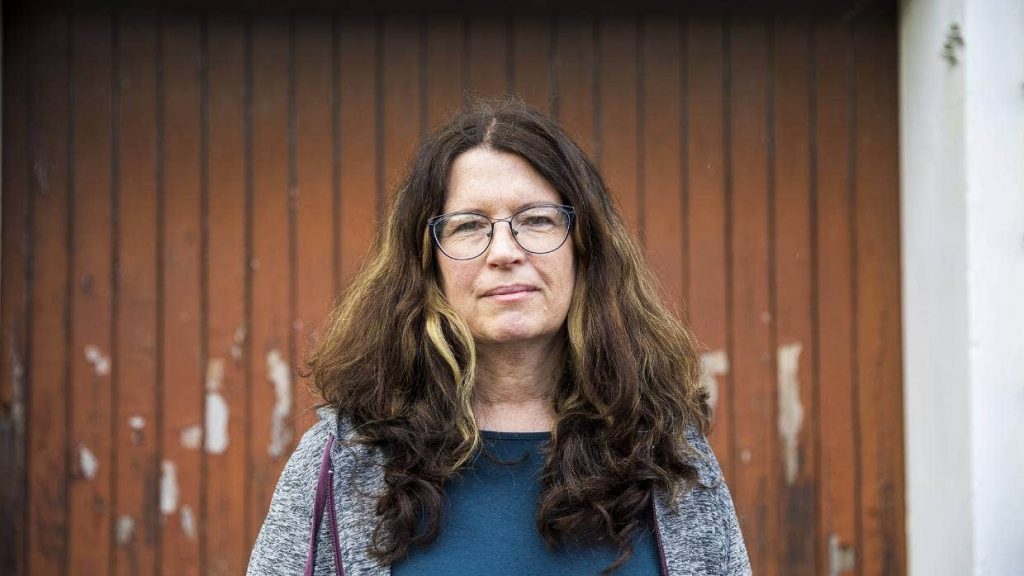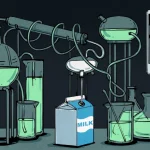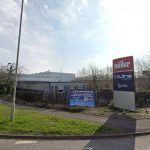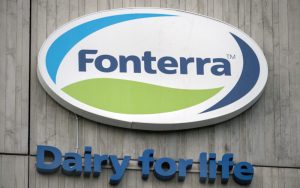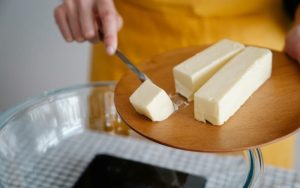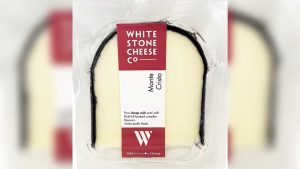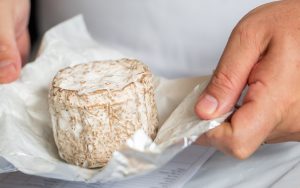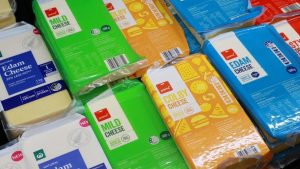
She much prefers talking about the recipes she dreams up as part of her job as master cheesemaker at Fonterra’s Bridge St site in Eltham, and the New Zealand Specialist Cheesemakers Association’s 2022 champion cheesemaker.
Customers of the site’s Cheese Bar shop have likely taken home blocks of speciality cheese with her name on the label.
The little shop is a popular place for those in the know to pick up some of the company’s newer and limited production cheeses, along with bargains such as offcuts of aged cheddar and parmesan blocks for half the supermarket price.
It’s tucked a little way from SH3 up a one-way street, but between 9-3 on weekdays, the two parking spaces outside are rarely empty.
“It has everything that we make on site and some we don’t make here, including packed cheddar,” Laing said.
Although the cheeses are being made in a large factory, traditional cheese techniques are used, she said.
“The cheese is still made in large open vats and gets stirred and the curd cut by hand.”
These days the vats are stainless steel, not timber, and the cheesemakers wear hairnets and white overalls.
But the methods haven’t changed that much since Laing first saw cheese being made at a dairy factory at Brightwater while on a school trip as a kid.
In later years, she started and ran her own artisan business, Cloudy Mountain Cheese, and she still makes cheese at home on the weekends.
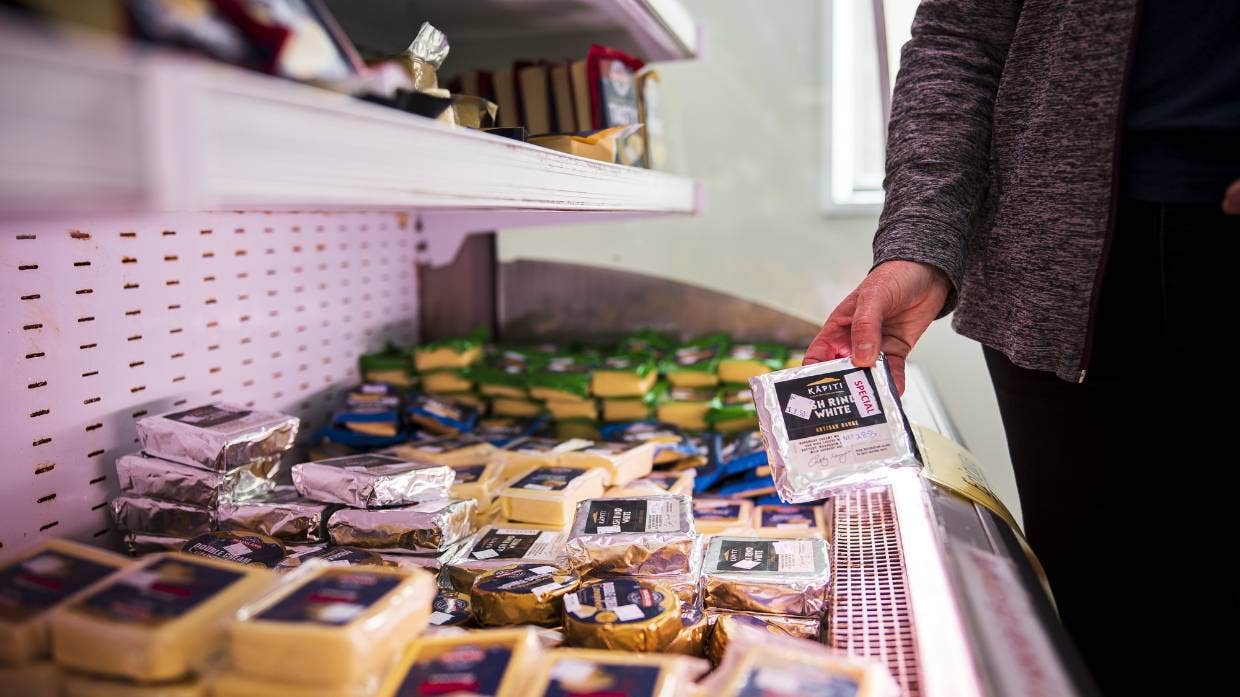
Laing’s name is on some of the speciality cheeses at the Eltham Cheese Bar.
The milk that goes into the Eltham cheese is delivered fresh from Taranaki farms.
“You want your milk close by, it makes better cheese, and it’s fresher,” she said.
“It’s all about the soil, the pasture and the animals. You get good quality milk from healthy stock on healthy pasture.”
Someone with a trained palate, like herself, can notice a flavour difference between a cheese made in Taranaki and the same recipe made in Southland.
There’s even more difference between a New Zealand cheese and that produced somewhere like France, where the cows are kept indoors and fed grain.
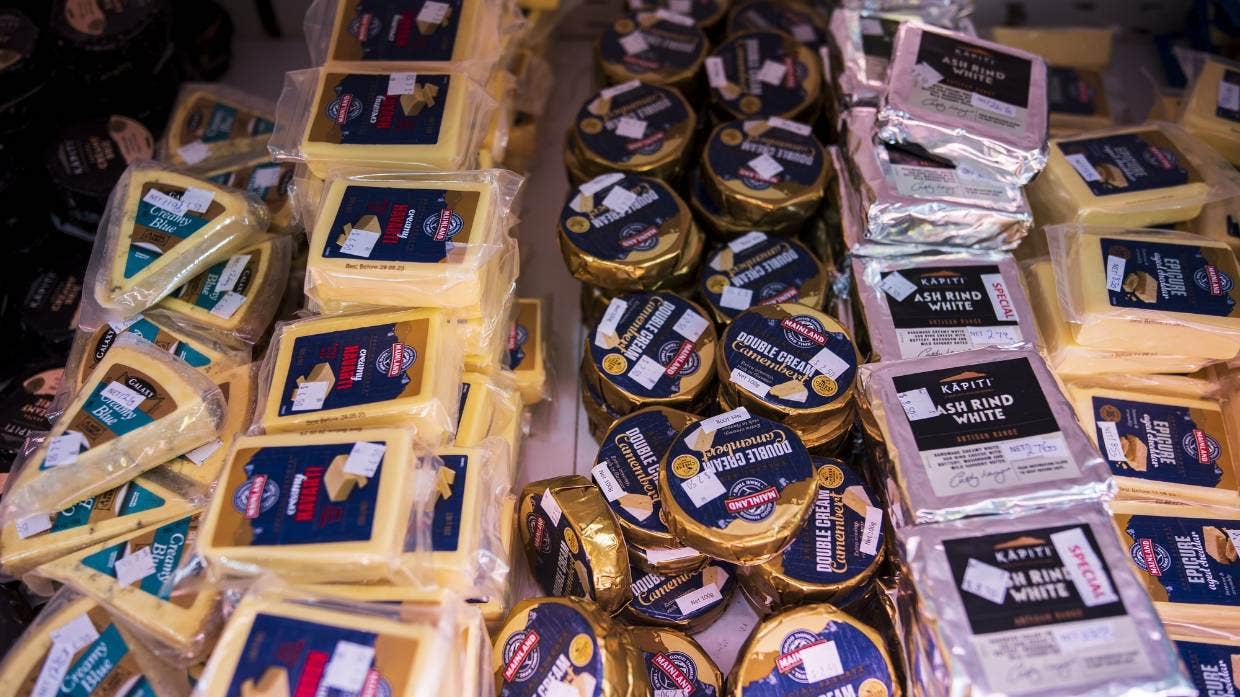
Cheese Bar customers can find interesting new styles to try
“The cheese is an expression of the land and of the animals.
“From a cheesemaker’s point of view, making cheese with milk from pasture-fed cows, that’s the best milk.”
She doesn’t have a favourite cheese.
But there are a few she’d put on a summer cheeseboard, with a generous serving of crackers and interesting nibbles.
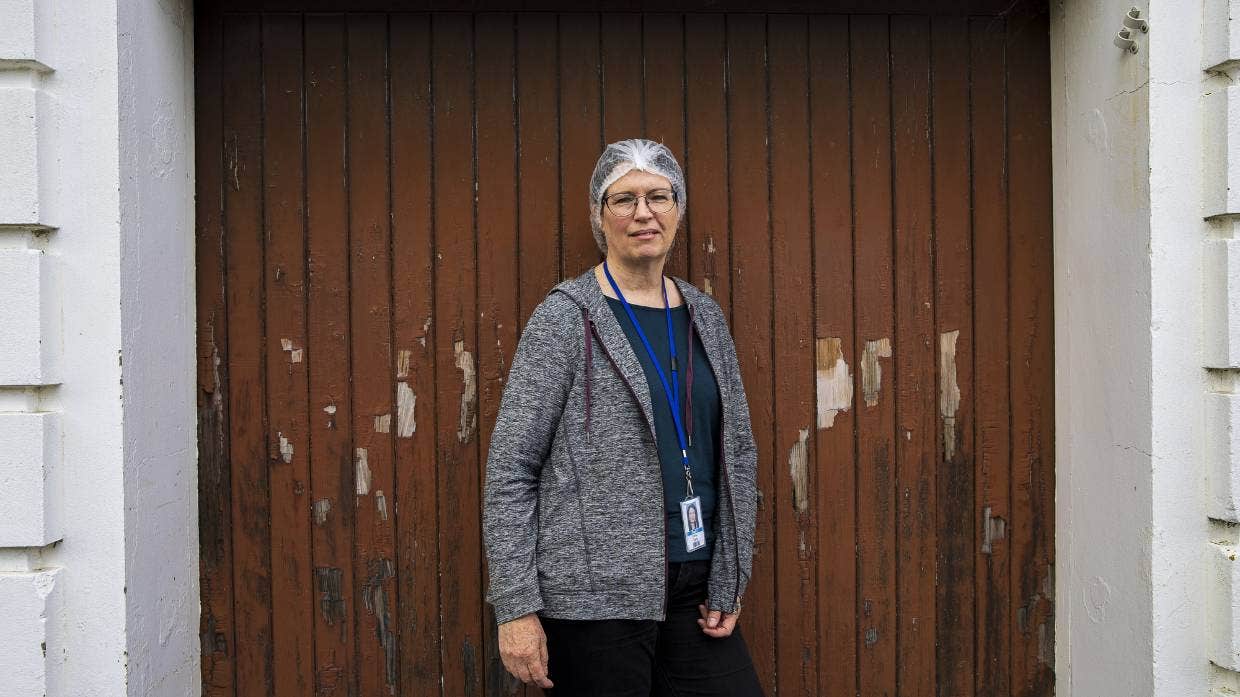
Laing outside the cheese factory on Bridge St, Eltham, which has been operating since 1919.
“Start with something mild like a creamy, buttery manuka Havarti, which we have here,” she said.
Then add some white mould cheeses, such as a nice creamy Brie.
“Then I would go through to some blues, which you can have really strong if you like sharp and salty and spicy, or more creamy, fruity flavoured blues like our Kikorangi Blue, which is milder but really unctuous.”
And for added interest, she suggests adding a Rarama, a washed rind “stinky” cheese.
“It’s a really lovely creamy, gutsy, earthy cheese, a little bit different.”
